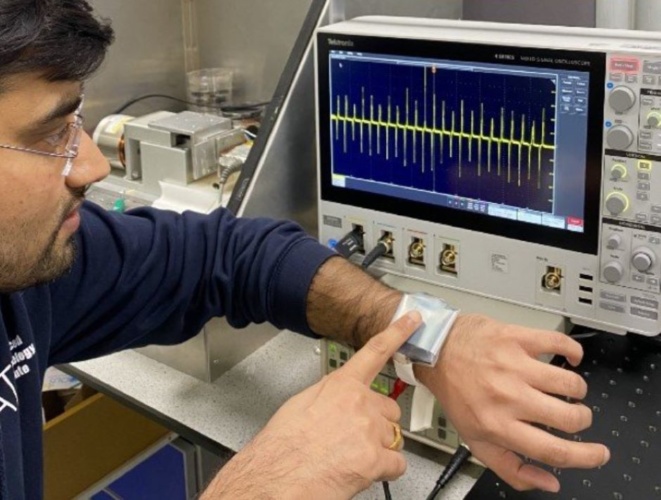Wearable powered by waste and movement
Plastic waste and paper wipes have been repurposed into a wearable device that runs on energy harvested by the wearer's movements.

The prototype device can transmit Morse code, and the team at Surrey University is now focusing on plans to use this technology in smart watches.
"Our research demonstrates that there is a path to creating sustainable technology that runs on electricity powered by us, the users of that technology,” said Dr Bhaskar Dudem, project lead and Research Fellow at Surrey University's Advanced Technology Institute (ATI).
Surrey's device is 'self-powered' thanks to materials that become electrically charged after they come into contact with one another. These Triboelectric Nanogenerators (TENGs) use static charge to harvest energy from movement through electrostatic induction.
MORE FROM ELECTRONICS & COMMUNICATIONS
“We didn’t perform any special processing of waste materials, except the hot-pressing treatment of the plastic lid of a coffee cup,” Dr Dudem told The Engineer. “The tissue paper was directly coated with the carbon nanoparticles by brush coating without any processing treatment.”
Register now to continue reading
Thanks for visiting The Engineer. You’ve now reached your monthly limit of news stories. Register for free to unlock unlimited access to all of our news coverage, as well as premium content including opinion, in-depth features and special reports.
Benefits of registering
-
In-depth insights and coverage of key emerging trends
-
Unrestricted access to special reports throughout the year
-
Daily technology news delivered straight to your inbox










National Gas receives funding to develop Gravitricity underground hydrogen storage system
One single rock salt mine - Winsford - has 23 <i>MILLION </i>cubic metres of void and even allowing for 10% of that void set aside for hazardous waste...